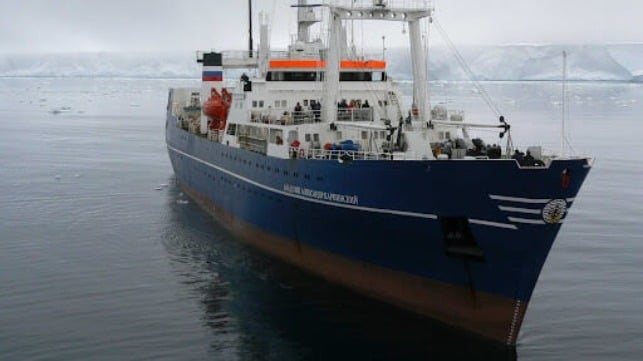Investigation Confirms Role of Russian Research Vessels in Spying

Months after NATO raised the red flag over covert espionage missions by Russian research vessels targeting critical infrastructures in Europe, a detailed investigation has now unearthed the magnitude of the threats.
The international research project into Russian espionage at sea has revealed the extent to which the Kremlin has been using research vessels with armed soldiers on board to systematically spy on gas pipelines, data cables, wind farms and military infrastructure in the Baltic and North Seas.
Conducted by Dutch outlet Pointer and journalists from six other countries, the investigation shows the Baltic and North Sea have become the epicenter of Russian maritime espionage since the Ukraine invasion, with at least 72 research vessels linked to spying or sabotage missions. Based on decoding of more than 1,000 intercepted Morse messages and analyzing AIS signals from the ships, the team concluded that the Russian vessels have made 428 voyages since February 2022.
The fact that the vessels were engaging in spying is evident from their suspicious movements within the exclusive economic zones (EEZ) of European countries. In at least 54 voyages, the ships sailed extremely slowly for hours, followed a striking zigzag pattern or stopped completely.
The suspicious movements have been particularly conspicuous off the coast of Denmark, where Russian research vessels that are supposed to carry out hydrographic surveys or rescue operations double in reconnaissance operations. At least 15 voyages were recorded near critical infrastructures in Denmark. Other countries that have been victims of the spying missions include Estonia, Norway, the Netherlands, the United Kingdom, Finland and Germany.
From the investigation, the team was able to determine that the anomalous ship movements usually took place in the vicinity of critical infrastructures like gas pipelines, data cables and wind farms, with the ultimate goal being sabotage. Particular cases involved the Russian research vessels sailing in close proximity to a NATO submarine diving area near Germany, wind farms off the Dutch coast and the Baltic connector gas pipeline between Estonia and Finland.
Among the research vessels that were identified in engaging in reconnaissance missions include Akademik Karpinsky, Admiral Vladimirsky and Akademik Boris Petrov. Over the past three years, the three vessels have sailed slowly through the Dutch EEZ several times. In June this year, another vessel, Sibiryakov, sailed at low speed through the North Sea just above the Europipe - a gas pipeline between Norway and Germany.
Notably, all the ships involved in the clandestine operations are accompanied by armed soldiers, including members of the Spetsnaz, a military unit specializing in reconnaissance and sabotage. Some of the vessels are equipped with military radar, mini-submarines and underwater drones. To hide their mission, the ships often switch off their AIS so that they cannot be tracked.
The investigation comes months after NATO put its members on high alert regarding Russia using research vessels to map out civilian infrastructure in member countries. These fears have resulted in countries enhancing their shadowing activities on suspicious Russian ships.
James Appathurai, NATO Assistant Secretary General, told the team that Russian research vessels have been mapping critical infrastructure with highly sophisticated equipment, with the aim of sabotaging it. “In the past six months, we have seen an increase in threats against our countries. These include sabotage, political interference, disinformation, cyberattacks, forced migration, and attacks on critical undersea infrastructure,” said Appathurai.
